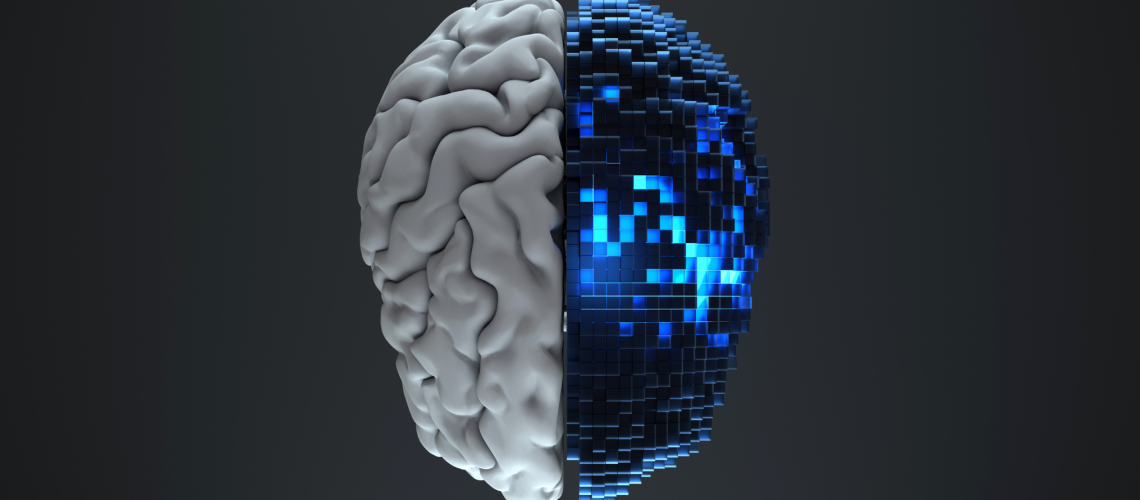Artificial Intelligence (AI) is revolutionizing the modern workplace by automating tasks, enhancing decision-making, and improving efficiency across various industries. As AI technologies become increasingly sophisticated, a debate arises: Is AI a competitor to human productivity, or can it serve as a collaborative partner?
While AI excels in processing large volumes of data and performing repetitive tasks, humans bring creativity, emotional intelligence, and critical thinking to the table. Striking the right balance between leveraging AI capabilities and harnessing unique human skills is essential for maximizing productivity. This balance is particularly evident in creative fields, such as video editing, where AI video editors streamline workflows while human editors infuse creativity and storytelling into their projects.
AI’s strengths in the workplace
AI is revolutionizing the modern workplace by enhancing efficiency, accuracy, and cost-effectiveness. Its ability to automate tasks, process large datasets, and operate continuously is transforming how businesses function and enabling employees to focus on more strategic work.
Efficiency and automation
AI significantly boosts workplace efficiency through the automation of various tasks. It excels in rapid data processing and analysis, handling large datasets much faster than humans. AI can automate repetitive tasks like video editing, where an AI video trimmer can trim clips automatically, allowing employees to concentrate on more creative and strategic work.
Accuracy and precision
AI systems demonstrate high levels of accuracy and precision, reducing error rates in tasks such as data entry and calculations. In manufacturing and quality control, AI-powered inspection systems can identify defects that might be missed by human eyes, significantly improving quality assurance.
Cost reduction
One of AI’s most compelling advantages is its ability to reduce costs. By automating routine tasks, businesses can lower labor expenses and reallocate resources more effectively. AI-driven insights help optimize resource allocation, ensuring efficient utilization of both human and technological assets.
Human strengths in the workplace
Humans bring unique capabilities to the workplace that AI cannot replicate, such as creativity, emotional intelligence, and critical thinking. These strengths enable individuals to innovate, connect with others, and solve complex problems effectively.
Creativity and innovation
Humans possess an innate ability to generate novel ideas and solutions, making creativity a fundamental strength in the workplace. This capacity for innovation allows individuals to think outside the box and adapt to unforeseen circumstances, whether that means developing new products, improving processes, or finding unique ways to engage customers. Unlike AI, which relies on existing data and patterns, human creativity thrives on intuition and imagination, enabling teams to push boundaries and explore uncharted territories.
Emotional intelligence and empathy
Emotional intelligence is a uniquely human trait that plays a crucial role in building relationships with clients and colleagues. This ability to understand and manage emotions fosters trust and collaboration in the workplace. Providing compassionate customer service is another area where humans excel; empathy allows employees to connect with customers on a personal level, addressing their needs effectively. Additionally, navigating complex social dynamics within teams requires a nuanced understanding of interpersonal relationships, which AI cannot replicate.
Critical thinking and complex problem-solving
Humans are adept at critical thinking and complex problem-solving, skills essential for analyzing nuanced situations and making informed judgments. In an ever-changing business landscape, employees must develop strategies to address multifaceted challenges that may not have straightforward solutions. This capability is particularly valuable in high-stakes environments where quick thinking and adaptability are necessary for success.
The importance of balance and collaboration
Achieving optimal productivity requires a strategic balance between AI and human capabilities. By identifying tasks suited for each and fostering collaboration, organizations can maximize efficiency and innovation. Striking this balance ensures that both AI technologies and human skills are utilized effectively to drive success.
Identifying tasks best suited for AI vs. humans
To maximize productivity, it is essential to identify which tasks are best suited for AI versus those that require human intervention. AI excels in data-driven, repetitive tasks such as data entry or basic analysis, while human skills shine in creative, interpersonal, and critical tasks that require emotional intelligence and innovative thinking.
Strategies for successful AI and human collaboration
Successful collaboration between AI and humans requires strategic planning. Training employees to work alongside AI systems can enhance their capabilities while ensuring they remain relevant in the workforce. Redesigning job roles to focus on uniquely human skills will empower employees to leverage their strengths effectively. Fostering a culture of continuous learning and adaptation will also help organizations thrive in an increasingly automated environment.
Examples of successful AI-human partnerships in various industries
Numerous industries have successfully integrated AI into their workflows while maintaining human involvement. For instance, in healthcare, AI assists doctors by analyzing medical data and providing insights, allowing physicians to focus on patient care. In marketing, AI tools analyze consumer behavior while creative teams develop engaging campaigns that resonate with audiences.
Overcoming challenges and concerns
The integration of AI into workplaces comes with challenges, such as fears of job displacement, biases in algorithms, and data security concerns. Addressing these issues is essential for successful implementation. Organizations must proactively tackle these challenges to ensure a smooth transition into an AI-enhanced work environment.
- Addressing fears of job displacement due to AI: Concerns about job displacement due to AI are valid but can be mitigated by emphasizing the creation of new roles related to AI implementation and maintenance. As businesses adopt advanced technologies, opportunities will arise for employees to transition into these new positions. Providing retraining and upskilling opportunities ensures that workers can adapt to changing job requirements while remaining valuable contributors.
- Mitigating potential biases in AI algorithms: Biases in AI algorithms can lead to unfair outcomes; therefore, it is crucial to ensure diverse and representative datasets during AI training. Implementing oversight and monitoring mechanisms can help identify biases early on, allowing organizations to address them proactively before they impact decision-making processes.
- Data security and privacy concerns related to AI implementation: As organizations integrate AI systems into their operations, data security and privacy concerns must be prioritized. Establishing robust security protocols and ensuring compliance with regulations will protect sensitive information while fostering trust among employees and customers alike.
The future of work: a symbiotic relationship
The future workforce will likely see humans and AI working together in a symbiotic relationship where both entities enhance each other’s capabilities. This collaboration has the potential to improve productivity while creating new opportunities for innovation across various sectors.
- Predicting AI’s evolution and workforce impact: AI is expected to automate more tasks while enabling humans to focus on creative and strategic roles. This evolution will reshape job structures, creating new opportunities that combine human insight with technological prowess.
- Augmenting human capabilities and creating opportunities: AI not only automates tasks but also enhances human decision-making, creativity, and efficiency. By leveraging AI’s strengths, humans can explore new possibilities and drive innovation across sectors.
- Ethical considerations in AI development: As AI becomes integral to workplaces, ethical concerns must be addressed. Organizations should prioritize fairness, transparency, and accountability in AI systems to ensure they benefit society while minimizing risks.
Conclusion
In conclusion, the integration of AI into the workplace presents a transformative opportunity for both organizations and employees. By striking a balance between AI capabilities and human strengths, businesses can enhance productivity, foster innovation, and create a more dynamic work environment. As we navigate this evolving landscape, prioritizing ethical considerations will be essential to ensure that AI technologies benefit society as a whole. Embracing this symbiotic relationship will empower the workforce to thrive in an increasingly automated future.
Guest writer


























